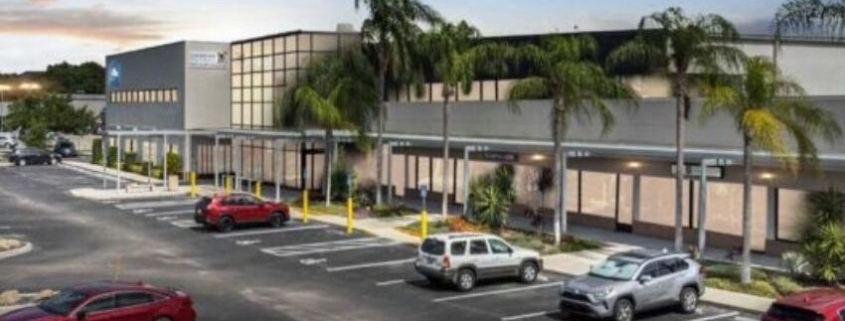An estimated $92.3 million expansion and renovation at Texas Health Hospital Rockwall is nearly doubling the size of the hospital and bringing a Level II Neonatal Intensive Care Unit (NICU), a Cardiac Catheterization Lab and an expanded Emergency Department to the growing North Texas community.
By expanding, Texas Health Rockwall, a joint venture between Texas Health Resources and area physicians, is increasing healthcare services to Rockwall and nearby communities.
“We are growing Texas Health Rockwall to better serve our patients and their families,” said Cindy Perrin, president of the hospital. “We are especially proud of our new NICU, which will help meet the health needs of our tiniest patients closer to their homes. Proximity to a hospital that can address critical care needs will bring greater comfort to families living in the communities we serve.”
A new two-story addition transforms an inpatient wing into a four-story bed tower. The project will add 32,000 square feet of new space and 51,000 square feet of renovated interior areas. These additions and renovations are being constructed in phases, with final completion expected in summer 2023.
Once the project is completed, the hospital is expected to deliver an estimated 1,200 babies a year, up from 400 or 200% today.
The project is an investment in the future health of families and residents in a high growth area. The hospital, which began as a small community hospital with a focus on surgery in December 2007, serves patients and families from various counties, including Rockwall, Kaufman, Hunt, eastern Dallas County and southern Collin County.
“Our caregivers live in these communities,” said Jason Linscott, chief operating officer and chief financial officer at Texas Health Rockwall. “We want to provide the best care for our neighbors, friends and family members. This expansion allows us to bring greater access to medical services to families living east of Lake Ray Hubbard.”
The estimated population of Rockwall County was listed as 116,381 according to 2021 U.S. Census figures, an increase of more than 38,000 since the 2010 Census. Rockwall and nearby communities have been attracting businesses as North Texas continues to grow.
The new eight-bed NICU includes two private rooms and a separate room for parents who need to stay overnight to care for their babies. This addition brings a NICU to the hospital for the first time.
The NICU and other renovated areas have spacious waiting rooms in light blue and gray tones. Wave features are painted on the walls, alluding to the nearby lake. These features are intended to instill a sense of calm.
Most of the first floor is being renovated or refreshed. The facility’s front-line caregivers provided input into the design based on needs that came to light during the COVID-19 pandemic.
Once completed, Texas Health Rockwall’s project will include:
- • New NICU
- • Ten new Labor & Delivery Rooms in an expanded Labor & Delivery area – up from seven
- • Two C-Section rooms up from one
- • Twenty-four postpartum rooms up from 10
- • Twelve Intensive Care Unit (ICU) beds up from six
- • Renovation of the Post Anesthesia Care Unit
- • Expanded Emergency Department with 14 emergency room beds – up from seven
- • New Cardiac cath lab and Interventional Radiology lab
- • New kitchen
- • New central plant and additional parking
Source:Blue Ribbon News




